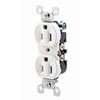|
» Home Electrical Wiring
» Electrical Wiring Directory
» Basic Residential Electrical Wiring
» Need Electrical Help? Ask the Electrician
» Basic Residential Electrical Wiring
» Need Electrical Help? Ask the Electrician
Electrical Wiring for a Laundry Room

|
Summary: Fully Explained Photos and Wiring Diagrams for Laundry Room Electrical Wiring with Code Requirements for most new or remodel projects*. © By: Dave Rongey |
How to Install Laundry Room Electrical Wiring
Considerations to help determine the required circuits for your Laundry Room
The first consideration will be your clothes dryer, will it be be Gas or Electric?
The electric clothes dryer will require a dedicated 30 Amp 4-Wire Circuit. Is the laundry room equipped with an area to iron clothes? If so a 20 Amp circuit should be installed as well. If the laundry room does not have a window, then an exhaust fan will be required along with a switch. Occupancy controlled lighting will be required too.
See the NEC Code requirements in the table below for more specific information.
Laundry Room Electrical Code Requirements |
|
The Electrical Code requires that outlets within six feet of the laundry or utility sink must be GFCI protected. Important Factor: Find out if the Main Service or the Panel that will supply the home electrical wiring for laundry room equipment has adequate load capacity and space for the circuits and breakers. |
|
Laundry Room Blueprint and Wiring Design Layout |
|
Home electrical wiring for laundry room electrical codesAll lighting must be either: all florescent, or provide a "manual-on occupancy sensor" All room exhaust fans shall provide a min of 5 Air Exchanges Per Hour. One outlet on a separate 20 amp circuit must be provided and be within 6 feet of the intended location of the laundry washing machine appliance. A GFCI is required for all 120 volt receptacles installed within 6 feet of sinks for the home electrical wiring for laundry room. Receptacles installed for a dedicated purpose, such as clothes washer may have a receptacle which is not protected by GFCI. Provide a 4-wire outlet for the electric dryer. |
|
Electrical Circuit Wiring for the Laundry Room |
||||
| Clothes Washer | Dryer Wiring | Exhaust Fan | Fluorescent Lighting | Utility Sink |
 |
 |
|||
| Dryer Cords | 120 Volt Outlet | Light Switch | Occupancy Sensor | GFCI Outlet |
Laundry Room 120 and 240 Volt Electrical Circuits to Consider |
120 volt devicesWashing MachineLighting Under Cabinet Lighting Exhaust Fan Ironing Board 240 volt equipmentClothes Dryer |
| NEC Code graphics provided by Mike Holt Enterprises. |
The Safest Way to Test Electrical Devices and Identify Electric Wires!The Non-Contact Electrical TesterThis is a testing tool that I have had in my personal electrical tool pouch for years, and is the first test tool I grab to help identify electrical wiring. It is a Non-contact tester that I use to easily Detect Voltage in Cables, Cords, Circuit Breakers, Lighting Fixtures, Switches, Outlets and Wires. Simply insert the end of the tester into an outlet, lamp socket, or hold the end of the tester against the wire you wish to test. Very handy and easy to use.
The Quickest Way to Check for Faulty Electrical Wiring!The Plug-In Outlet TesterThis is the first tool I grab to troubleshoot a problem with outlet circuit wiring. This popular tester is also used by most inspectors to test for power and check the polarity of circuit wiring. It detects probable improper wiring conditions in standard 110-125 VAC outlets Provides 6 probable wiring conditions that are quick and easy to read for ultimate efficiency Lights indicate if wiring is correct and indicator light chart is included Tests standard 3-wire outlets UL Listed Light indicates if wiring is incorrect Very handy and easy to use.
Strip Off Wire Insulation without Nicking and Damaging the Electric Wire!The Wire Stripper and Wire CutterMy absolute favorite wire stripping tool that I have had in my personal electrical tool pouch for years, and this is the tool I use to safely strip electrical wires. This handy tool has multiple uses: The wire gauges are shown on the side of the tool so you know which slot to use for stripping insulation. The end of the tool can be used to grip and bend wire which is handy for attaching wire onto the screw terminals of switches and outlets.. The wire stripper will work on both solid and stranded wire. This tool is Very Handy and Easy to Use. |
||
Residential Electrical Parts and AccessoriesLight Switches 120volt Outlets Circuit Breakers Electrician Tools Voltage Testers |















